Invited lectures papers
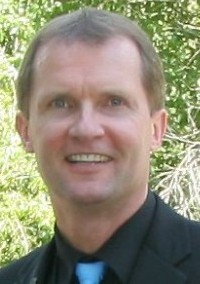 | Terry Wohlers State of the Industry |
Industry consultant and analyst Terry Wohlers will present quantitative and qualitative analysis of additive fabrication worldwide. He will provide growth data from a recent global study, give his views and opinions on the health of the industry, and highlight recent developments and trends. Wohlers will discuss the demand for 3D printing as a tool for design and rapid product development. He will also focus on the benefits and challenges of using additive processes for custom and replacement part manufacturing, limited edition products, short run production, and series manufacturing.
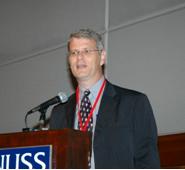 | Ian Gibson Medical Products for Rapid Prototyping: |
This paper will be an overview of how Rapid Prototyping (RP) has influenced the way we think about medical product development. Even in the early days of RP, medical practitioners have recognised the potential when visualising and developing solutions for individual patients. This paper analyses those milestones that have led to increased interest in medical applications. For example, improvement in accuracy and reduction in costs has led to indirect processes for creating implants. The development of medical grade materials has made it possible for parts to be used in operating theatres. Metal powder systems have made it possible for direct fabrication of prosthetics. Increasing interest in rapid manufacture has led to a number of applications for the mass customisation of medical related products. The discussion finishes with an overview of the state-of-the art in tissue engineering, which is leading the way towards bone replacement as a standard treatment. Researchers are also investigating how to create complex organs using printing technology to place cells and nutrients in very precise locations and this paper will discuss how close this technology is to creating practical applications.
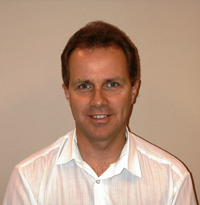 | Ian R. Campbell Designing a new range of products to capitalise on Rapid Manufacturing |
Rapid manufacturing (RM) provides a new freedom for component geometry. This can be exploited in many ways ranging from component reduction to aesthetic innovation. This presentation will take the form of a case study based in a small UK company who recognised that RM had a great deal to offer them. Examples of new designs and re-designed products will be shown that demonstrate the various benefits that RM was able to bring. Issues such as accuracy, repeatability, costs, user acceptance and supplier relationships will also be covered. The case study will provide other prospective users of RM with vital insight into the practicality of design for RM
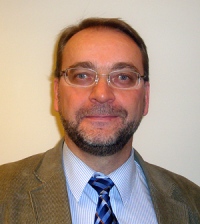 |
Jukka Tuomi |
Incremental Sheet Forming (ISF) has been applied to manufacture layer-by-layer vise sheet metal parts for prototyping, tooling and manufacturing. ISF is not material additive technology but because there does not exist material additive technology for sheet metal parts manufacturing ISF has taken its role among RP&M technologies. In this paper latest developments of the ISF technology as well as industrial application case examples will be discussed. The presentation will also describe generic cost model for Rapid Manufacturing applications. Based on this cost model and industrial product development and manufacturing case applications economic of ISF will be reported.
Gideon N. Levy |
The steady growth in applying the so called Rapid Prototyping processes for final user components is encouraging. Nevertheless we have several hurdles to overcome. The most significant is quality, process consistency in manufacturing. In this respect no compromise is admissible. The powder based processes SLS and SLM are the most advances and promising in RM, in dependence of the application the SLA may also be considered an option.
We have presented in the past a TQM model. The paper raises and discusses the main quality check points and uncertainty for the various processes. Some basic solutions are proposed other are still in research and development status.
Unless this hurdle is consequently overcome including design, row materials, process stability, post processing and reporting, the RM will remain a secondary sideway in manufacturing technologies.
 | Andrea E. Reinhardt High volume production based on RM - challenges and solutions |
The presentation will give an overview about RM technologies used in consumer electronics, life science and industry. Special focus will be on high volume production based on RM with 1 mio parts per hour per system, how different industries needs can be reflected and in which way nano based materials can have a positive impact.
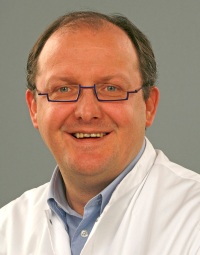 | Jules Poukens, MD DMD Medical Rapid Prototyping and |
Bone and soft tissue defects, especially in the face, usually create aesthetic and functional problems to the patient with psycho-social discomfort. These defects are currently reconstructed by using computer-aided design and manufacturing processes in some cases. Rapid manufacturing is only at the starting point for medical applications. European funded projects such as CUSTOM-FIT and CUSTOM-IMD show the intention for further development of this new technology.It will take some time before CAD-CAM implants will become state of the art in medical treatment.Clinical use, especially in the cranio-maxillofacial field, and future perspectives of this new treament will be demonstrated by clinical examples.
Phill Reeves Rapid Manufacturing for the realisation of ‘user described’ customer-centric entertainment and recreational content |
Much has been written about the technological capabilities and constrains of Additive Layer Manufacturing (ALM) for the production of end-use component parts, in the application we now know as ‘Rapid Manufacturing or RM’. In most cases RM has been investigated as a ‘tool-less’ alternative production technology to displace moulding machining or casting. This has to-date resulted in limited market penetration. Much of this limited penetration stems from a need for robust process and materials validation, within the early adopters such as the aerospace, automotive and medical sectors. However, within more ‘customer-centric’ areas such as homeware, lightings, games and toys, these barriers to entry can be much lower. Within this presentation it is suggested that these ‘customer-centric’ applications in fact make up the majority of today’s successful RM business applications, and present a significant market opportunity in the future. In this presentation the author discusses current commercial applications of Rapid Manufacturing for the realisation of such products, where a significant element of the design content is ‘described’ by the customer. Such applications include the realisation of internet gaming characters, 3D topological representations and giftware. The author will discuss how different web enabled RM business models operate and the implications of these on product ‘personalisation’, intellectual property control, branding, product liability and licensing. The author will then discusses how the concept of ‘Grid-RM’ or ‘distributed manufacturing’ is being developed to maximise latent global RM capacity, whilst maintaining content provider value. ‘Grid-RM’ is a networked methodology being developed by Econolyst to broker the supply and demand of RM parts globally, and is part of a larger UK government funded project with Boeing, Virgin Atlantic, Caterpillar and Delphi amongst others. However, as the presenter will demonstrate, Grid-RM is just as applicable in the manufacture of consumer goods as in the manufacture of aerospace parts.
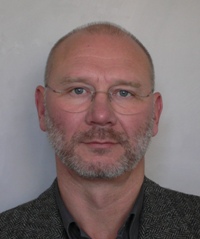 | Igor Smurov SLM - Process Monitoring and Control |
At latest years a methods and apparatus for surface temperature monitoring during laser machining are developed. Next step is the development of appropriate monitoring systems and their integration with laser technological equipment. In the present paper the development of a monitoring system adapted for SLM-process and basics of real time process control are discussed. The SLM-systems are intended for utilisation a wide range of materials with greatly different properties including melting point. To control the correct choice of process parameters and to visually inspect the process quality, a monitoring system for the SLM-process was designed and fabricated. To discern defects of the deposition of the powder layer and to control production quality, the visual observation system continually monitors a 30 by 30 mm zone on the surface of the powder bed. It is efficiently protected from laser radiation and surface thermal radiation by a system of filters and dichroic mirrors (~ 1011 contrast). The surface illumination is carried out using the LED ringlight system. Surface temperature distribution at the sintering zone was registered by the spectral ratio method using a two-channel spectral high-speed intensified video camera and two wavelengths pyrometer. Deviation of maximum surface temperature from its optimal value was chosen as a criterion for the express method of quality control.
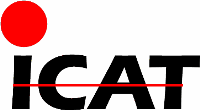 | David Gonzales Personalized Tools Manufactured by Rapid Manufacturing for Medical Surgery -a Success Case of a Spanish SME |
SOCINSER is a young, dynamic company that designs, manufactures and sells surgical implants and medical equipment. They have spurred to evolve continuously by both the medical sector and their own business philosophy as they strive to serve medical professionals as best as possible and promote ongoing, direct communication with them with the aim of enhancing quality of life. Their ultimate goal is to create products that are met with total satisfaction by doctors and patients alike. SOCINSER needed to manufacture a set of instruments for a new type of surgery, following the requirements of the surgeon who has developed a new technique. A first prototype set had been manufactured by traditional means (milling, lathing and welding) which had allowed the first series of field tests to be performed. But this can be further improved. The main aim was to produce a set of surgical instruments for an innovative type of surgery in less time, at lower cost, and with improved functionality. In order to fulfil this objective, meetings were held between SOCINSER Engineering Team and the rapid manufacturing (RM) team from PRODINTEC, to carry out an in depth study of the functionalities involved, part by part and as a whole, developing the best manufacturing strategy in each case. In this way a new synergic design was produced that combines and takes advantage of the best of each technology: milling, lathing, welding and RM, optimizing production costs and generating new advantages at the same time. For example, all parts with a long and hollow stem were usually built by welding the stem to a drilled, press-curved plate. However, they are constructed as a single piece using RM. The biggest part was partially hollow and is hence lighter. The chances of successfully lathing such long, thin-walled parts were very low, but this problem was solved by using RM technologies. A second set was built according to this new design, and was tested by the surgeon, who acknowledged the benefits of the new set, such as lightness, toothed structures, finish, etc. Besides this and thanks to the special property of very high elongation at break of the EOS SS17-4 stainless steel (up to 28% compared to a standard 5%) certain surgical risks can be avoided.
 | Martijn Laar Business aspects of customization and rapid manufacturing |